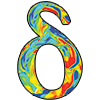SpaceClaim Training Course — Ep 01
Session 4
- Episode
- 01
- Run Time
- 16m 2s
- Published
- Oct 15, 2025
- Topic
- SpaceClaim
- Course Progress
- 0%
Overview
In this session of the SpaceClaim training program, we’ll explore some of the most essential tools within the 2D sketching environment. We’ll start by becoming acquainted with fundamental sketching utilities and learning various techniques for creating basic shapes like lines and circles. Following that, we’ll examine the Modify section to discover its practical capabilities, including Mirror, Create Corner, and additional helpful features. Developing proficiency with these sketching and modification tools is crucial, as they not only streamline the drawing workflow but also enhance the precision and overall quality of the geometries you produce.
1. Fundamental Sketching Utilities
At the session’s outset, we concentrated on learning SpaceClaim’s core sketching tools used for generating simple geometric forms. Various approaches for drawing lines and circles were presented. For circles, we practiced the standard technique where the center point is established first followed by the radius, along with the three-point circle construction method. Additionally, we learned rectangle creation using both the two-point and three-point approaches.
2. Enhanced Sketching Capabilities
After mastering SpaceClaim’s basic sketching commands, we progressed to more sophisticated tools including Arc, Spline, and Construction Line. The Arc utilities enable us to generate curves either by designating start and end points or by defining three points along the arc path. The Spline tool proves particularly valuable when developing intricate shapes with flowing transitions, while the Construction Line provides reference geometry that assists in organizing sketches and preserving symmetry. Together, these capabilities offer designers enhanced flexibility and precision when creating more elaborate forms, making the sketching workflow more adaptable and productive.
3. Sketch Modification Utilities
This session also examined several key tools within the Modify section, which are employed to adjust and refine sketches. The Mirror tool enables selected geometry to be replicated across a reference axis, ensuring design symmetry. Likewise, the Create Corner and Rounded Corner tools simplify connecting two lines, either by forming a sharp intersection or by generating a smooth radius. Utilizing these tools results in cleaner and more polished geometry, while reducing potential errors that might emerge during subsequent 3D modeling phases.
Session Summary
This session’s objective was to familiarize students with design utilities and modification commands for creating efficient and accurate 2D models. The fundamental tools serve a critical role in establishing precise and dependable geometry, while the modification utilities enable valuable adjustments such as symmetry and other enhancements. Integrating these functions not only elevates the quality and efficiency of the design workflow, but also establishes the groundwork for more dependable and effective 3D modeling in subsequent stages.

